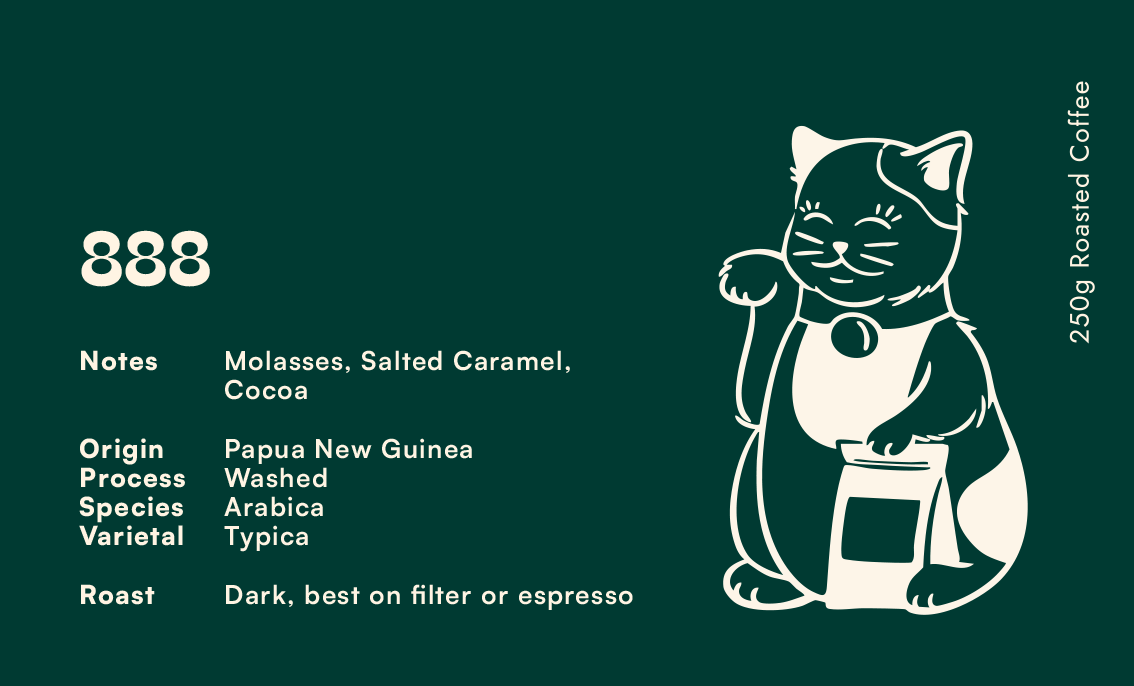What's exciting about this coffee
The 888 is the kind of coffee that just works. Sourced from smallholder farmers along PNG's Lamari River, this is a reliable, high-quality cup that delivers day after day. The name, symbolizing prosperity, reflects the dedicated work happening at origin through improved processing and farmer support.
It's forgiving across brewing methods and holds up beautifully to milk, making it perfect for cappuccinos and lattes without losing its character. Grown at high altitudes from classic heirloom varieties like Bourbon and Typica, it offers the clean, balanced profile PNG is known for, with enough body and sweetness to shine however you brew it.

















